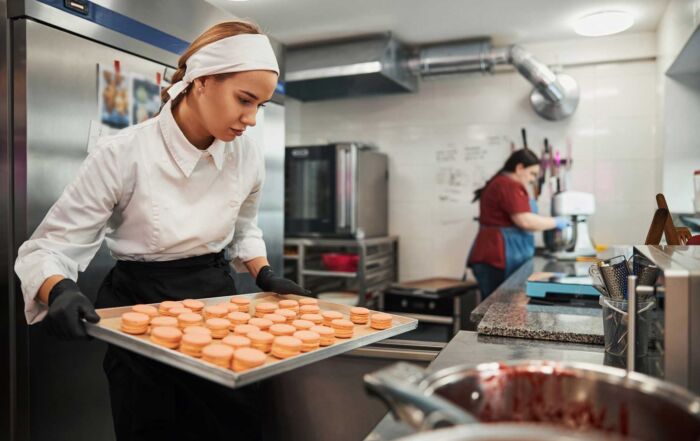Embracing Technology for Enhanced Food Safety in Foodservice Operations
Technology. We love it, we hate it. I’ve always been fascinated by technology; I remember getting my first Blackberry in the mid-90s and thinking it was the pinnacle of technological advances. Before that, I remember ordering a dictation program in college that was going to revolutionize the way I “typed” my assignments. Looking back, it really wasn’t worth the box that the program came in. Now, we have ChatGPT that will write the entire paper for us!
With the rise of technology, innovative solutions are emerging to address the challenges associated with food safety. From farm to table, adopting technology-driven approaches not only enhances food safety practices but also fosters customer trust and brand reputation. In the ever-evolving landscape of the foodservice industry, ensuring the safety and quality of the food served is paramount. I’ve addressed a few of these in-depth in the past, but I thought I might provide an overview of some of the “new” areas of technology that we see in foodservice. I say “new” because no sooner than I publish this blog, these technologies will almost be obsolete.
Embracing technology is not just a trend; it’s a necessity in today’s competitive market.
If it appears the power will not be coming back on immediately dispose of food that is in the process of being cooked but has not yet reached its final cooking temperature. While one might argue that you can quickly get it under refrigeration, adding warm food to a non-functional refrigerator will only cause the temperature in the unit to increase more quickly.
Food that has been in proper hot holding when the power went out can be kept for up to four hours until it must be disposed of. You do have the option to cool the food to 41 F or lower following the traditional cooling guidelines.
From a food safety perspective, one of the immediate concerns during a power outage is the temperature of refrigerated and frozen items. Keep refrigerator and freezer doors closed as much as possible to maintain the cold temperature. A closed refrigerator can keep food at a safe temperature for about four hours, while a closed freezer can maintain the temperature for up to 48 hours, depending on its fullness and insulation.
Start to monitor your cooler and freezer temperatures immediately. Don’t wait until it gets above a safe temperature. As long as refrigerated food was maintained at safe temperatures prior to the outage it can be kept for four hours, but the time can be extended to six hours as long as the food does not exceed F.
You could explore moving all food into one refrigeration or freezer unit to maximize the time at which you will be able to keep food at the proper temperature. But do be very cautious that you are not creating bigger issues with cross-contamination. Always remember property storage guidelines and keep raw foods away from ready to eat foods.
If it appears that the outage may be for an extended period, explore the possibility of donating food to first responders, especially if it is an emergency. Focus on using perishable items that are at risk of spoiling first.
In all of this, don’t forget to communicate to important stakeholders, including your customers, employees, and inspector. Your inspector is a valuable asset who can assist in ensuring the safety of food and helping you come up with a plan to minimize losses.
After the power is restored, be sure you are reopening in a safe manner. If food in refrigerators or freezers went past the point it could be saved, be sure to clean and sanitize the units thoroughly before bringing in new deliveries.
After you’ve reopened, take time to evaluate your response to the outage. What worked well? What could have been handled more effectively? Use this experience to refine your emergency standard operating procedures and enhance your preparedness for future challenges.
While power outages may disrupt operations, a proactive approach to food safety can help you maintain your reputation and customer trust, while minimizing losses. By focusing on temperature management and effective communication you can navigate these challenges with confidence and ensure that your customers continue to enjoy safe and delicious meals, even in the face of unexpected power disruptions. Risk nothing,
READ MORE POSTS
What Foodservice Professionals Need to Know about the FDA Milk Testing Changes
In late-April and early-May 2025, headlines across the country and several social media posts stirred [...]
Before They Arrive: Your Health Inspection Prep List
A few weeks ago, I welcomed our local health inspector into a class I was [...]
Beyond Simple Compliance: Nurturing a Food Safety Culture in Your Team
In writing my last blog post, I was torn on addressing the issue of getting [...]
Crafting Effective SOPs to Serve as your Food Safety Foundation
As I was writing my last blog, I realized I referenced standard operating procedures (SOPs), [...]










